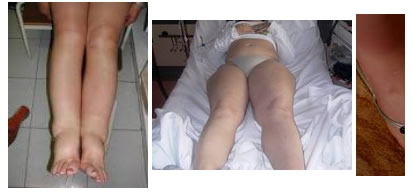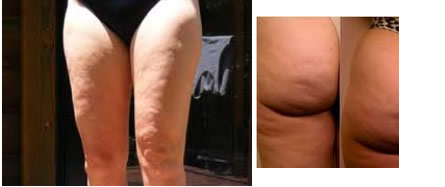INTRODUCTION
Fisiopress SRL is a manufacturer of sequential compression therapy equipments with thirty years of experience. The company began his activity by making a 12-output device for the professional field which received great approval in the medical world towards which the company was projected. Fisiopress SRL is also present throughout the Italian territory and in European countries such as Romania, Hungary, Slovenia. Its founder, Alessandro Offidani, is a bioengineer, and, in designing this device, takes advantage of all his experience in the cardiovascular sector, gained in activities previously carried out, precisely in this area.
He knows very well the vascular problems that afflict a large part of the population, the physiopathology of the venous, arterial and lymphatic systems, but also the aesthetic problems due to venous insufficiency and water stagnation. From his experiences in the medical field and from engineering background, he could exploit all your knowledge of physics and fluid dynamics to create a tool suitable for correctly and effectively draining stagnant liquids by introducing what is called BICOMPRESSIVE sequential pressotherapy. It is a unique system which, without the need for special programs, simulating certain types of massages, but not always effective if done mechanically, in a completely innovative way, generates a very pleasant draining propulsive action. Let us now explain the meaning of bicompressive pressure therapy and all the other unique features of this extraordinary equipment expressly dedicated to the world of rehabilitation:
Truly sequential bicompression cycle
Partially overlapped inner bags
D.A.S.C. (Distribution To Communicating Sectors)
Visualization of the real applied pressure
Real Pressure system
External terminals for lower limbs customizable through extenders made to measure for the patient.
SEQUENTIAL COMPRESSION THERAPY
The term "sequential" refers to the operating cycle of the device, therefore to the way in which the pressure is applied to the limbs to be treated. It consists of a compressive phase in which the action itself starts from the periphery of the arm or leg garment and continues gradually from sector to sector towards the base of the limb itself: when all sectors are inflated to the same pressure , up to the last, the second part of the cycle begins, deflating all sectors. At this point the compression phase begins again and so on. This cycle is perfect for pushing stagnant liquids in their natural direction to their discharge zone.
D.A.S.C. SYSTEM
The proprietary D.A.S.C. (Communicating Sector Distribution) allows all the compression inner sectors that are gradually inflated to be perfectly at the same pressure in order to avoid any form of stagnation or reverse flow. In fact, inside the device, a particular program puts all the sectors in communication between them during their inflation, to maintain a perfectly homogeneous pressure. In this way the sequential cycle pushes the fluids correctly, without any pressure discontinuity, in their physiological direction.
INTERIOR PNEUMATIC BAGS PARTIALLY OVERLAPPED
Inside the garments (arm, leg, abdominal strip) there is a second structure which keeps the pneumatic bags themselves parallel and partially overlapping, ensuring that, in the passage of pressure from one sector to the next, a perfect pressure continuity is maintained without spaces between them, where the liquids could stagnate if the sectors were parallel and not overlapping.
BICOMPRESSIVE SYSTEM
Flagship of the Fisiopress Company!
The partial overlapping of the internal sectors has been studied, in addition to the reasons set out above, also for a further very important characteristic, to create a system called bicompressive.
What does bicompressive system mean?
Instead of creating a single pressure directed towards the treated limb, the apparatus creates two, one radial, obviusly towards the treated limb, but also another, called tangential, whose direction is parallel to the limb itself. The set of these two pressure components means that the compressive action is not perceived as a succession of single compressions, sometimes even annoying, but as an hug which compresses yes, but also pushing towards the base of the limb in an effective and agreeable.
INDIVIDUAL REPLACEMENT OF THE INTERNAL PNEUMATIC BAGS
The particular internal structure of the sectors allows the replacement of single pneumatic bag, if damaged over time, without changing the entire terminal, making a simple and economical maintenance.
DISPLAY OF THE REAL PRESSURE APPLIED
The system D.A.S.C. in addition to keeping the pressure between the various internal sectors of the garment perfectly homogeneous, allows to view the real pressure that the device transmits to the treated limb. This pressure will be the one common to all the sectors inflated at that moment, given that they are connected to each other inside the device.
REAL PRESSURE SYSTEM
The compressive action performed by the Fisiopress device is pleasantly incisive. The times are calculated so that this action is particularly effective, deep and capable of generating a perfect drainage. The limb becomes lighter with a significant decrease in volume.
CUSTOMIZABLE GARMENTS
When the measurements of the patient's leg exceed the measurements of the Fisiopress garment, it is possible to customize the garment itself through a custom-made extender designed according to the measurements of the patient's leg.
APPLICATIONS
Now let's see what are the possible applications of compression therapy in the aesthetic area:
Water retention
It is a very common disorder among the population, especially the female one, and affects about 30% of women.
The cause may be due to some pathologies, such as cardiac or renal dysfunction, inflammation, or an allergic form, but more often it is caused by a wrong lifestyle and incorrect nutrition.
"Water retention" is the body's tendency to retain liquids, these accumulate more in areas already predisposed to the accumulation of fat such as the thighs, buttocks and abdomen.
In medicine, this anomalous accumulation of liquids is defined as "edema", edema is a condition of impaired metabolism, where due to a malfunction of the venous and lymphatic system, these stagnant liquids, rich in toxins, alter a metabolism cell already suffering from a reduced supply of oxygen and nutrients.
Precisely because of its considerable diffusion, water retention is a deeply felt but often overestimated problem. In fact, many women mistakenly attribute their overweight to water retention, ignoring the fact that, in the absence of major pathologies, the contribution of water retention to weight gain is all in all marginal. On the contrary, the opposite discourse is true; that is, being overweight slows down diurisis and favors water retention.
The edema
from the Greek (οίδημα, swelling) it is therefore an accumulation of liquids in the interstitial spaces of the body.
It can affect a limited area, such as a leg, or it can be generalized, when it occurs throughout the body. In this case, several liters of fluid must accumulate before edema is clinically evident; for this reason, weight gain generally precedes other manifestations of edema. When the edema affects all areas of the body we speak of anasarca.
To understand its causes correctly, we need to consider the generation of interstitial fluid: it is described by Starling's equation which describes the relationship between osmotic pressure and hydrostatic pressure, pressures that act in opposite directions along the semi-permeable walls of the capillaries.
In the healthy organism the hydrostatic pressure, which tends to determine the escape of liquids from the capillaries, is almost balanced by the colloid-osmotic pressure, which is exerted in the opposite direction. The minimal leakage of liquids into the interstitial space is drained by the lymphatic vessels, which reintroduce it into the venous circulation through the thoracic duct which opens at the junction between the subclavian vein and the internal jugular vein. When the hydrostatic pressure is no longer balanced by the colloid-osmotic pressure, lymphatic obstruction occurs, vascular permeability increases and an accumulation of fluid occurs in the interstices which, if not resolved, causes edema.
Cellulite is a consequence of edema.
It is an alteration of the skin tissues, generally divided into three stages of development, related to the seriousness and formation of the problem. The first phase is the oedematous one, characterized by a stagnation of liquids which causes a slight undulation of the epidermis and heaviness in the legs or feet. The second phase is the fibrous one, in which the skin takes on an orange peel appearance, i.e. with depressions and "holes", the tissues begin to lose compactness and tone. The third phase is the sclerotic one, with a significant deformation of the skin, which also loses elasticity, while the surrounding tissue (connective) appears flaccid, is badly supplied with blood, cold to the touch and hurts when pressed.
Blood microcirculation is compromised and ends up engulfing and making the subcutaneous adipose tissue suffer; the skin then "rebels" and manifests itself with this type of blemish. The disorder does not resolve itself in the orange peel appearance of the skin, on the contrary, this imperfection is only the alarm bell of more or less serious damage to the microcirculation.
Defined with the term "panniculopathy-edematous-fibro-sclerotic" it is considered a beauty flaw that affects about 80-90% of female subjects. It is especially evident in some regions of the body (thighs, buttocks and hips), which are particularly sensitive to the action of female sex hormones (estrogens) which tend to make us retain liquids and accumulate fat. It is established in the hypodermis, predominantly adipose tissue located under the most superficial layer of the skin (dermis).
The adipose cells increase in volume and retain liquids while the metabolism between the intercellular spaces (blood microcirculation and peripheral lymphatic) proceeds with difficulty. The lack of drainage of liquids therefore causes water stasis and a local inflammatory process.
The alterations can be of various degrees, up to ruptures and lacerations of the cell membranes. Fats (triglycerides) escape and creep between cells and tissues to form a compact mass that completely alters the structure and metabolism of the tissues involved (lipodystrophy). The compression to which the connective tissue is subjected has repercussions on the blood vessels (blockage of the metabolism and lowering of the local temperature) and on the nerve endings (pain).
Depending on the severity of the disorder, three types of cellulite are distinguished: compact, flaccid or edematous cellulite. Compact cellulite preferentially affects people in good physical condition and with toned muscles and often it is a simple water retention due to loss of liquids due to physical effort; flaccid cellulite occurs especially in middle-aged people, who have hypotonic tissue; Finally, oedematous cellulite occurs in association with compact cellulite, preferably on the legs, and is the fairly common consequence of circulatory pathologies. The disorder can go from simple retention to manifest, even permanent lesions (sclerosis), which present with hard and painful subcutaneous nodules. The causes are multiple and can be linked to constitutional, hormonal, vascular factors. Alcohol abuse and smoking certainly do not improve the situation.


